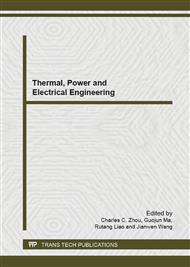p.615
p.623
p.628
p.634
p.639
p.646
p.653
p.662
p.669
A Novel Method of Static Security Analysis Based on Multithread Technology
Abstract:
With the UHV (Ultra High Voltage) power grid construction and the interconnection of regional power grids, the scale of power grids in China is increasing rapidly. At the same time, significant uncertainty and variability is being introduced into power grid operation with the integration of large-scale renewable energy in power systems. All of these pose an enormous challenge to the operation control of power systems in China. For a long time, online static security analysis, as an important part of EMS (Energy Management System), has been an effective tool for power grid operation. However, it is increasingly difficult for traditional static security analysis in serial computing mode to be online applied in bulk power grids in China. A new practical parallel approach for online static security analysis is put forward in this paper. A multithread parallelism is introduced into contingency screening, detailed contingency evaluation and decision support for reducing the execution time. By employing the multithread technology, the hardware resources of multi-processor/multi-core computer can be fully used and the program can be speeded up effectively. The performance of the parallel static security analysis is demonstrated by tests on two large-scale power systems. The test results show that the proposed method can be online applied in real bulk power grids.
Info:
Periodical:
Pages:
639-645
Citation:
Online since:
August 2013
Authors:
Keywords:
Price:
Сopyright:
© 2013 Trans Tech Publications Ltd. All Rights Reserved
Share:
Citation:


